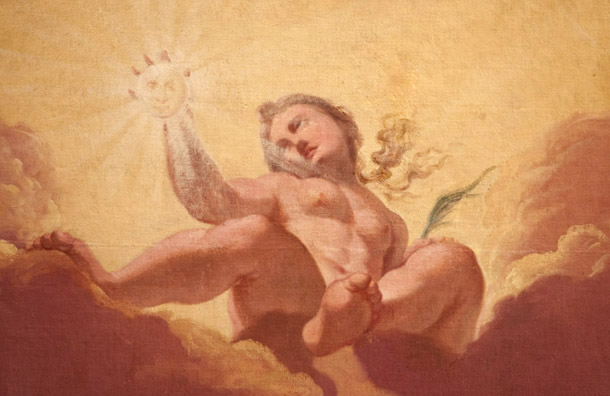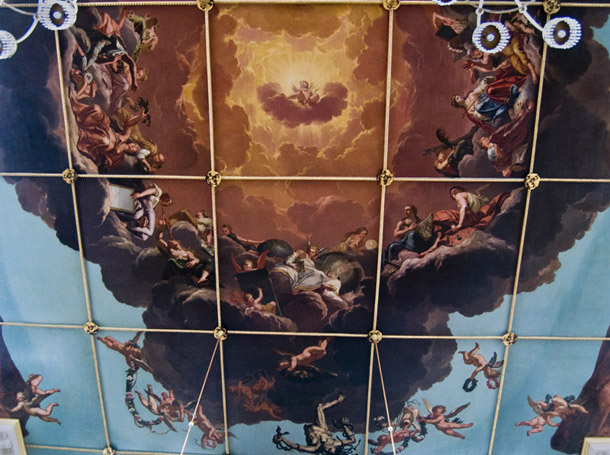Chapter Eleven: The Truth about Art
More video: Quality >>
—True and false are attributes of speech, not of things. And where speech is not, there is neither truth nor falsehood. … Words are wise men’s counters, they do but reckon by them; but they are the money of fools. – Thomas Hobbes, Leviathan (1651), Part I, Chapter 4

Fig. 11.1, Robert Streeter, Truth descending on being solicited and implored by all the Arts and Sciences, 1668–69, detail. Personified Truth looks to the Sun, Plato’s image for the Good, the source of knowledge: ‘So that what gives Truth to the things known and the power to know to the knower is the Idea of the Good. … Both knowledge and Truth are beautiful things, but the Good is other and more beautiful than they’ (Plato, Republic, 508e)
—To classical Greeks, Truth was the guarantor of knowledge, beyond appearances or right opinion. For that purpose we now use the word ‘science’, a distinction unavailable to Greeks without Latin. The scientific method of immersing oneself in a problem until a solution arrives, apparently of its own accord, which is then tested by experiments that could falsify it, has left us with a residue of reliable knowledge that is always open to improvement. Truth, on the other hand, implies a finality that repels further enquiry, a purpose to which it is often put. Scientists and artists are guided not by Truth, but by the Beautiful-and-Good, which surprises them with solutions ‘too beautiful to be wrong’. Since we have grown unaccustomed to employing the Good as a noun, Quality may be a better label for what is primary in our reformed metaphysics. Quality embraces the gamut of value, while requiring further qualification to function meaningfully as an adjective, as in ‘art is high-quality endeavour’, the hypothesis tested in this book. Nonetheless we should be less concerned with the word than the experience, which fills us with joy and leaves us with energy and confidence to face the future.— The Truth about Art, p. 175


Dear Patrick
I have enormously enjoyed your book (which I have out from the Cambridge UL at the moment but will amost certainly have to buy for myself) and wanted to thank you for it; as one might say: Ta for TTAA. Pirsig is on my shelves, though I have to say I did not enjoy L half as much as ZMM, qua novel of ideas. As for your observations on Truth in the NT, the author of John’s Gospel has Pilate walk out before the answer to his question at 18:38 may be made. The astute reader will have realized that he should rather have said ‘WHO is truth?’ – for the answer to that question has already been supplied by the Evangelist at Jn 14:6. Truth as a person – now there’s a theological challenge for you! (For my architectural if not my theological credentials see the website address below.)
Thank you so much for this encouraging message. The book does look for sustained attention from its reader, so I am glad yours was properly rewarded. Your remarks are especially welcome since they come from someone who loves architecture.
I agree that the sustaining narrative of Lila is not as gripping as that of ZMM, but Lila supplies the coherent metaphysics missing from the earlier book.
And if Truth is a person, she’d better be Good!